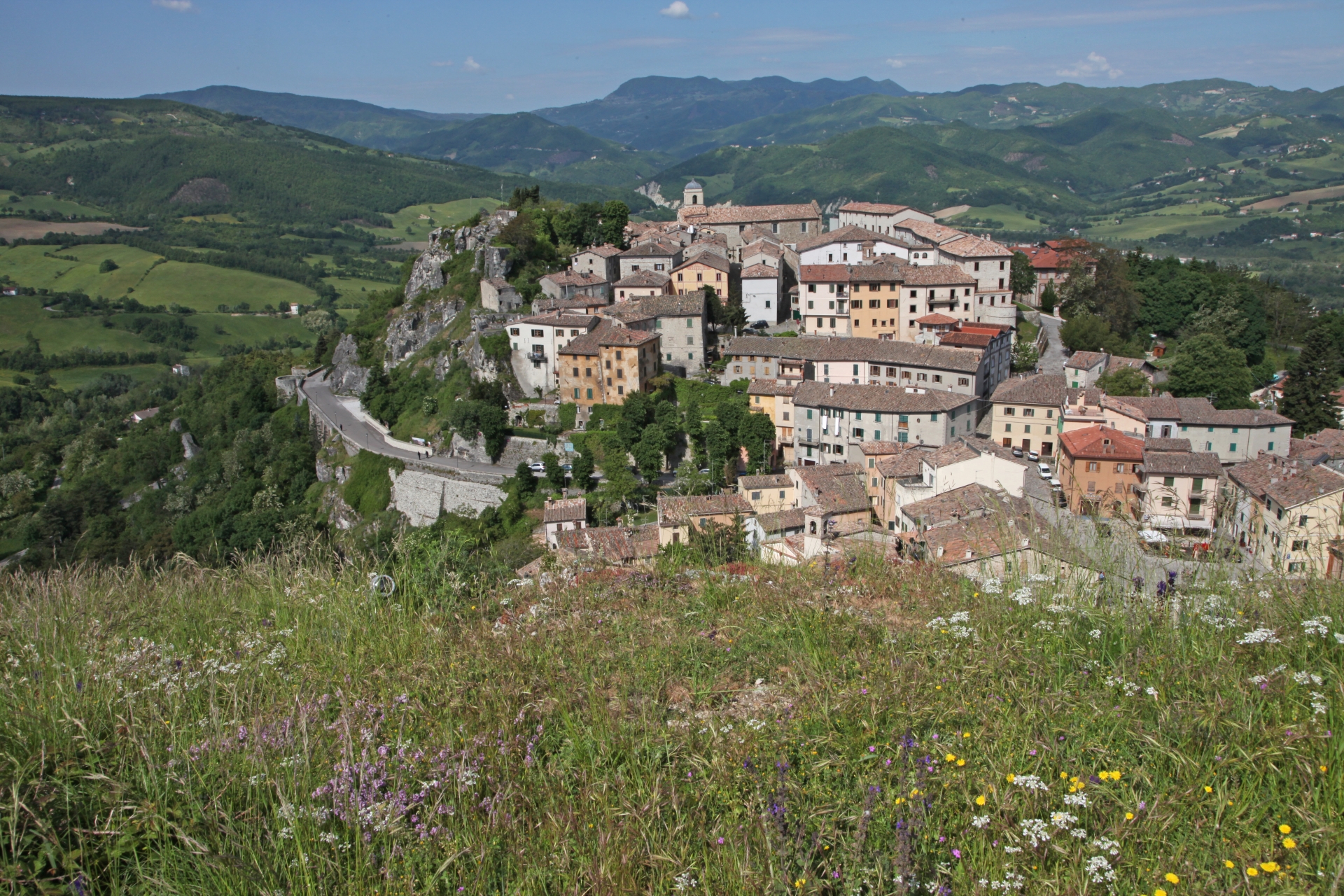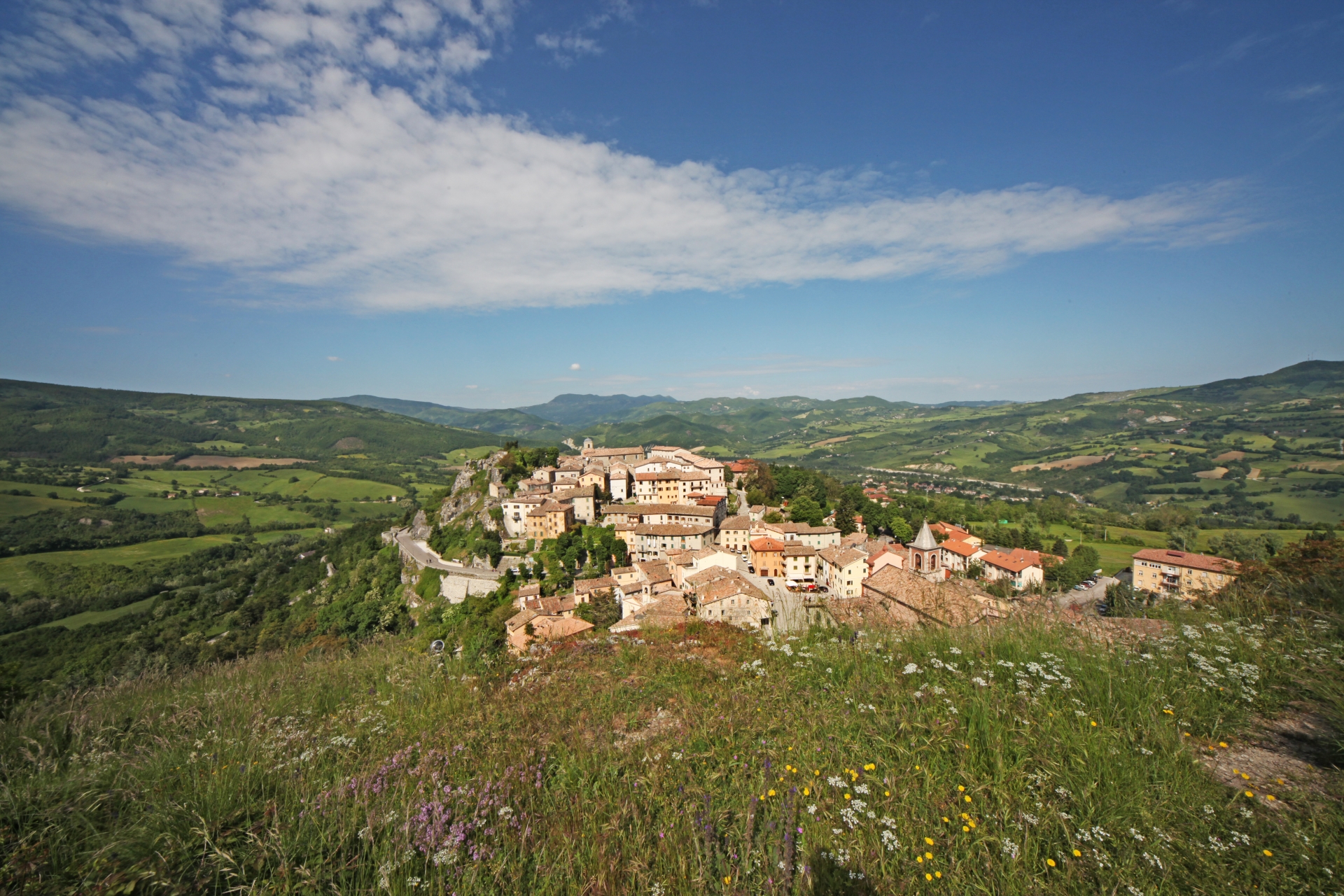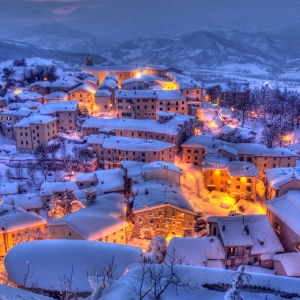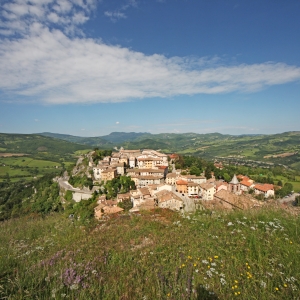Hamlet of Pennabilli
The village of Pennabilli has been awarded the Orange Flag by the Italian Touring Club.
The beautiful sixteenth-century cathedral can be immediately seen, appearing in the center of the town. It has been remodeled several times with a peculiar and recognizable red brick facade. Also worth visiting is the sanctuary church of Saint Augustine or Our Lady of Grace.
For fans of the history of musical instruments, a Bolognese organ is kept there, dated and signed by Cyprius Bolognensis 1564 - 1587.
Near this church is the Montefeltro seminary where the A. Bergamaschi diocesan museum is set up, which houses a collection of works, objects, and pieces of art that have been found in churches throughout the Montefeltro area: panels, paintings, frescoes, and sculptures, as well as sacred furnishings and vestments, all from the period that goes from the 14th to the 18th century.
From Piazza Vittorio Emanuele II, you go up along the street of the sundials.
The name of this street derives from the fact that seven artistic sundials are placed along its route, which mark the time according to methods belonging to different historical periods.
They are located on the buildings of the hamlet in the historic center and show the different ways in which time has been conceived of throughout the centuries.
They were set up in 1991, and once you enter the hamlet you will come across them one after another.
Among the things that are absolutely not to be missed during a visit to Pennabilli there are two that deserve particular attention.
The Open-air Museum - The places of the soul
It winds through the village and continues in the Upper Valley; it was created from the idea of the poet and screenwriter Tonino Guerra who gave it his expressive and fascinating poetics.
The installations, almost all outdoors, have no restrictions regarding access, and have created a remarkable interest in our territory both throughout Italy and abroad thanks to their originality and the universal contents they suggest, a "model of creativity and urban revaluation, a museum that is unique in its kind".
The places of the soul present in Pennabilli are:
The garden of forgotten fruits
The refuge of the abandoned Madonnas
The road of the sundials
The angel with the mustache
The sanctuary of thoughts
The petrified garden in the Bascio district
The Madonna of the snow rectangle in the Ca' Romano district.
Alongside these works, while walking through the historic village center, numerous other traces are visible that this poetic genius decided to have engraved around the village. They are small biographies, written on ceramics, of important and less important personages who have left some kind of memory regarding the city’s history and customs. They are what the master called "the words on the walls".
Museum of the World of Tonino Guerra
Housed in the basement of the Oratory of Saint Mary of Mercy, it admirably collects works, volumes, and films by the master poet Tonino Guerra.
It is a museum full of pictorial, ceramic, and sculptural works conceived of and created by Tonino Guerra. Still, it is also a place where you can learn more about the work of the Maestro and the context in which it was created, thanks to the archives, video library, and library set up inside.
A bit of history
Pennabilli owes its urban layout to the union of the two castles, Billi, above the rocky crag, and Penna, on the Roccione (rocky peak).
Of very ancient origins, it witnessed a succession of Umbrians, Etruscans, and Romans and around the year 1000, the town developed with fortifications, defenses, and sacred buildings on up to structuring the beautiful historic center.
It was a fief of the Seigneurs of Carpegna, before passing to the Malatestas of which it claims to be the "cradle", an event disputed with Verucchio. Here too, after the fall of Sigismondo Pandolfo Malatesta, power fell into the hands of Federico da Montefeltro.
Around 1300 the two autonomous municipalities of Penna and Billi united, giving rise to a single entity, as depicted in the civic coat of arms: two towers with a Feltri eagle. In 1572 Gregory XIII transferred the seat of the Diocese of Montefeltro from San Leo to here, today called San Marino-Montefeltro, a presence that still strongly characterizes the town both from a social and from an urban point of view. Proof of this is the Cathedral, the Sanctuary of the Madonna of Mercy, and the Augustinian Convent, places of great attraction. As is its natural environment, characterized by the Sasso Simone and Simoncello Park, 50% of its territory.
Ghost and legends
Wonderful Friday
On the third Friday of March 1489, it was the 20th, a miraculous event occurred in the Castles of Penna and Billi.
The fifteenth-century image of the Madonna of Mercy in Pennabilli, frescoed in 1432 in the church dedicated to Saint Christopher, known as Saint Augustine, dating back to the 11th century, then governed by the Augustinian hermits from 1374 to 1810 from which it took its name, shed tears from her right eye.
Some onlookers, astonished and incredulous wanted to dry her tears with cloths, but the tears continued to flow down her cheek, leaving a line on her clear face.
Two other miracles linked to this Madonna have remained in history, the apparitions of 1517 and 1522.
This is why she is called the Madonna of the tears of Pennabilli and, in Montefeltro, she is the most famous and venerated image of Mary with the title of the last Saint Mary of Grace, or more simply Our Lady of Grace.
The miracle of the tears made a great impression and was judged a compassionate, maternal warning.
In 1517, during the war declared by Lorenzo de' Medici against Francesco Maria della Rovere, Pennabilli was besieged by the Florentines, but on February 17th, the Madonna appeared on the surrounding walls and set the besiegers on the run. The fact was repeated on February 22nd, 1522. The troops under the command of Giovanni dalle Bande Nere camped again under the walls, attempting the capitulation of the town and the fortress.
The Duke of Urbino, having ascertained the situation as their being in a strong minority, advised the population to leave the town. All fled except 14 brave soldiers. At dawn, some of them went down to negotiate the surrender. The enemies agreed on the condition that everyone surrendered as hostages. In despair and grief, those few retreated to make the decision. At night while the enemies roamed around the walls trying to get into the castle, in the sky, in a strong glow, the image of the Virgin with her son in her arms appeared. The town was saved again.
The image is still much venerated and on the third Friday in March, called "wonderful Friday", in memory of what happened in 1489, solemn traditional celebrations are held in Pennabilli.




